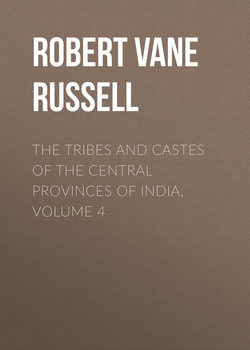Читать книгу The Tribes and Castes of the Central Provinces of India, Volume 4 - Robert Vane Russell - Страница 72
Part II
Articles on Castes and Tribes
Kumhār—Yemkala
Vol. IV
Kurmi
33. Agricultural superstitions
ОглавлениеThe cultivators think that each grain should bear a hundredfold, but they do not get this as Kuvera, the treasurer of the gods, or Bhainsāsur, the buffalo demon who lives in the fields, takes it. Bhainsāsur is worshipped when the rice is coming into ear, and if they think he is likely to be mischievous they give him a pig, but otherwise a smaller offering. When the standing corn in the fields is beaten down at night they think that Bhainsāsur has been passing over it. He also steals the crop while it is being cut and is lying on the ground. Once Bhainsāsur was absent while the particular field in the village from which he stole his supply of grain was cut and the crop removed, and afterwards he was heard crying that all his provision for the year had been lost. Sometimes the oldest man in the house cuts the first five bundles of the crop, and they are afterwards left in the field for the birds to eat. And at the end of harvest the last one or two sheaves are left standing in the field, and any one who likes can cut and carry them away. In some localities the last stalks are left standing in the field and are known as barhona or the giver of increase. Then all the labourers rush together at this last patch of corn and tear it up by the roots; everybody seizes as much as he can and keeps it, the master having no share in this patch. After the barhona has been torn up all the labourers fall on their faces to the ground and worship the field. In other places the barhona is left standing for the birds to eat. This custom, arises from the belief demonstrated by Sir J. G. Frazer in The Golden Bough that the corn-spirit takes refuge in the last patch of grain, and that when it is cut he flies away or his life is extinguished. And the idea is supported by the fact that the rats and other vermin, who have been living in the field, seek shelter in the last patch of corn, and when this is cut have to dart out in front of the reapers. In some countries it is thought, as shown by Sir J. G. Frazer, that the corn-spirit takes refuge in the body of one of these animals.
